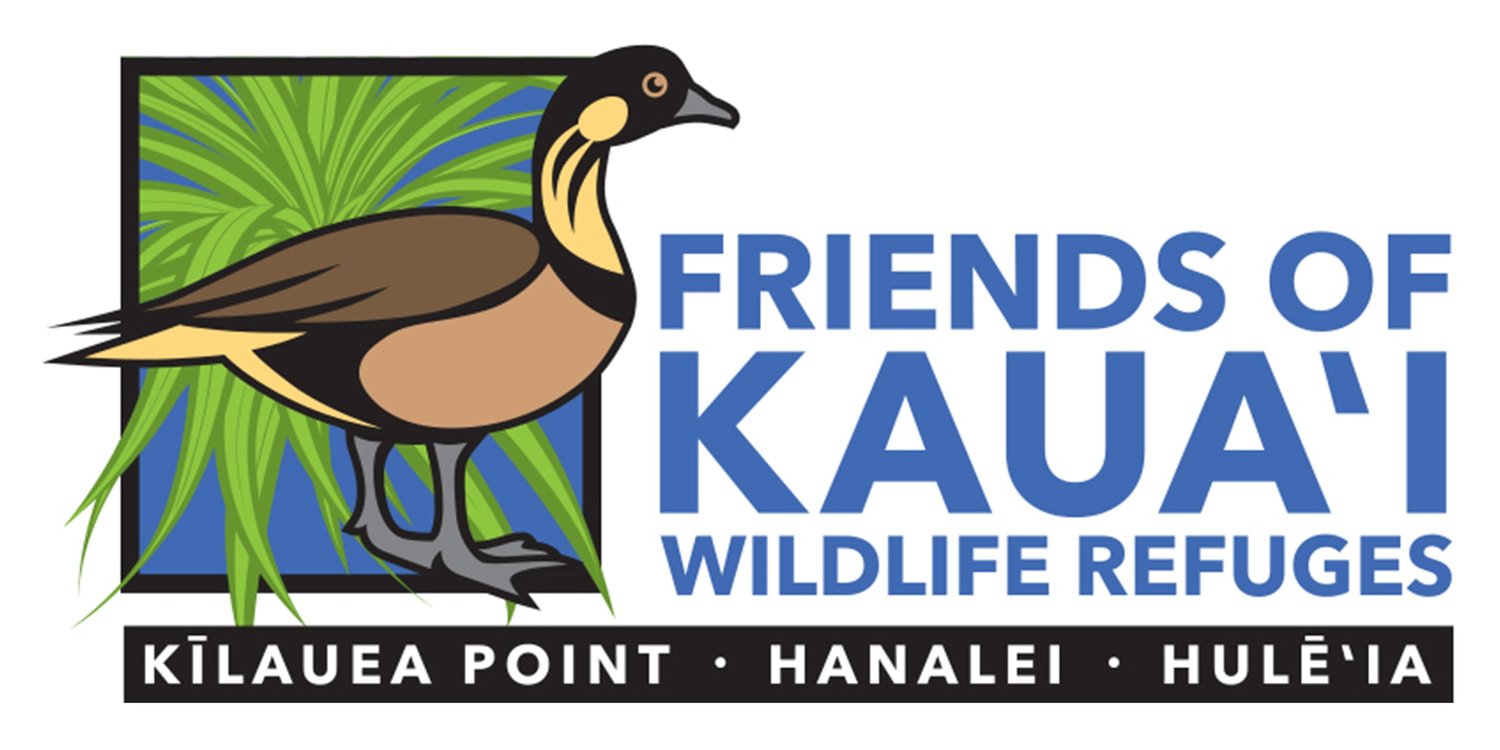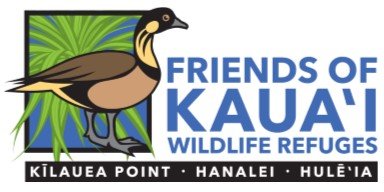Wildlife Spotlight: ‘ā
Much of our work is focused on species that are in peril and need our kōkua. However, it is just as important to celebrate those that are continuing to thrive in our ever-changing world. The ‘ā, or red-footed booby, is one of the most abundant bird species found at Kīlauea Point NWR. They have white feathers with black wing tips, a colorful blue bill and iconic bright red feet, which can generally only be seen just before or following a landing.
Visitors to the Refuge will likely view ʻā flying to and from the ocean to fish, as a sea of white “spots” amongst the green foliage on the flanks of Nihokū across the bay, and gliding along the updrafts that encircle the Refuge. Plus, this time of year, we are also enjoying views of the adolescent fledglings donning their temporary grey feathers as they begin to explore the Refuge, land precariously on fences and bushes, and take turns trying to touch the top of the lighthouse. This behavior generally only lasts for a few weeks and is delightful to observe!
Photo: Juvenile ʻā attempting to touch the architectural elements at the top of the lighthouse; Credit: Hob Osterlund and an anonymous visitor.
The origin or breakdown of the name of native Hawaiian wildlife species often relates to either a physical feature or, as in the case of the ʻā, it is reflective of the sound of their vocalizations.
Unlike other boobies, ‘ā choose to roost and build their nests in shrubs or trees. At Kīlauea Point NWR, they find favorable habitat on the coastal bluffs of Nihokū, located across the cove from the Visitor Center. Another remarkable feature of those amazing feet is that, rather than having a brood patch, ‘ā use their feet to incubate their single egg, wrapping them around the egg to maintain its proper developmental temperature.
In Hawai‘i, the peak breeding season of ‘ā is February through April, when both parents will work together to incubate their egg, and then brood and feed their chick. Adults will continue to feed their young for up to four months after hatching. Most young will then fledge between late June and September.
ʻĀ do not migrate and are here all year round, yet they can travel up to 40 miles offshore to feed. Hawaiians still identify schools of fish in association with ‘bird piles’ made up of ʻā as they fish around the islands. ‘Ā capture prey by plunge-diving, up to 26 feet in depth. Here in Hawai‘i, their diet is mainly comprised of flying fish and squid, but also includes mackerel scads, saury and anchovies.
‘Ā breed in colonies and pairs generally retain mates throughout several breeding seasons. They will begin breeding at 3 to 4 years of age and the oldest known individual was identified as 22 years old. Across Hawai‘i, their population is now estimated to be over 10,000 breeding pairs and, here at Kīlauea Point NWR, they are thriving. Come visit us and enjoy the views!
Photo: ‘Ā at Kīlauea Point NWR, Credit: Hob Osterlund.



